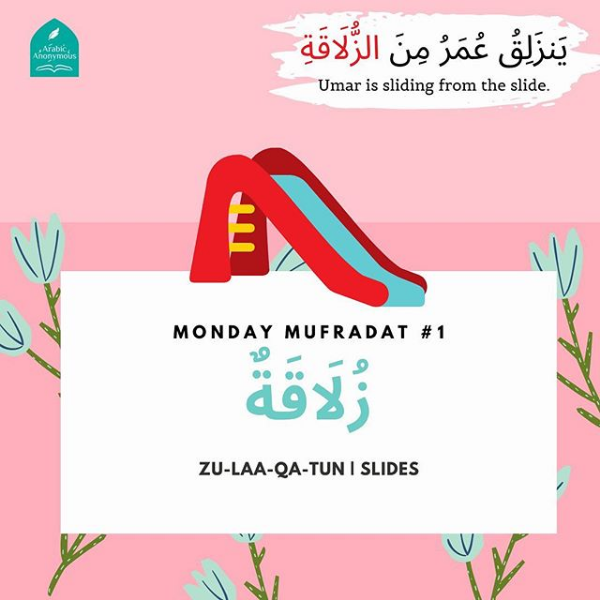
5 Ways to Develop Our Children's Arabic Vocabulary
Parents are often concerned whether their children are learning much Arabic or not. Due to this concern, parents often seek external help to ensure that their children are not left behind. In Singapore, this can be seen in the demand for assessment books, tuition and enrichment courses. However, Arabic resources for school-going children are hard to come by. How can parents support their children’s learning and development from home? Afterall, home is children’s first school. We list down 5 simple ways that parents can help their children’s learning from home. Read on!
1. Read Often

The word اِقْرَأْ, the imperative verb which means ‘Read!’ is the first word revealed to the Prophet Muhammad s.a.w. What is the divine wisdom behind the selection of this particular word by Allah?
There are many opinions regarding this. Ibn Katsir mentioned in Tafsir Ibn Katsir that, ‘knowledge is sometimes in writing’. And hence, to seek knowledge, one needs to read that writing. It is as if Allah is telling us to read in order to seek knowledge and seek knowledge by reading. It’s a cyclical process; reading and seeking knowledge. Almost as if knowledge could not be acquired without reading.
Reading is the single most simple and inexpensive activity that any parent can do at home with their children. Read every day. Read often; at least 15 minutes a day. Reading to your child helps your child to understand how words are used in context. Reading to your child helps them to identify and name the objects in their surroundings. There is such great importance in reading to your child that we could not stress it enough.
If you are teaching your child more than 1 language, then make sure that your child is exposed to books in all the languages that they are learning – yes, that includes Arabic. It may seem intimidating at first, but In Sha Allah once you do it consistently, it will become more enjoyable.
2. Model the language

Parents are their children’s first teachers; they imitate what we do and how we speak. If you want your children to love reading, model reading in front of your child. Let your child see you reading. Young children tend to imitate their parents often.
When talking to your child, use a variety of words to enrich their vocabulary. Be descriptive. If you do not know enough Arabic words then take the opportunity to learn with your child. For example, instead of just pointing to a cat and naming it, describe the cat.
Child: (points to a cat and says) Cat
Parent: Yes, that is a cat. It’s brown and furry.
You can also direct their attention to an object or topic that you would like to talk about by asking questions. This is especially good for your children who are 5 years old and above.
Parent: Did you see that bird?
Child: Where? Is it on the tree?
Parent: Yes. What do you think it is doing?
Child: I don’t know.
Parent: Do you think it is resting on the branch?
Child: I don’t think so. Don’t you lie down when you sleep?
Parent: Do you think birds rest by lying down?
Child: Maybe. I don’t know.
Parent: I’m not too sure either, but I have never seen a bird lying down.
Do you see how engaging in an interaction as above develop not just your child’s vocabulary but also his thinking skill? This is what we call quality interaction.
3. Quality Interaction
There is a classic equation that is often shared when it comes to interacting with our children, and that is, quantity is not equal to quality. A parent can be physically present with the child in the same room for one hour every day before dinner with each parent and child occupied with their own devices. Most would agree that the given scenario is not one we would describe as ‘quality interaction’ because in reality, no interaction took place then.
On the other hand, a parent spends only half an hour before bedtime with the child every night, reading to him or asking about his day. Although it was only half an hour, we would describe the latter scenario as ‘quality interaction’ because interaction took place. There is an exchange of conversations between the parent and child.
Quality interaction is often about spending time and being present without allowing distractions (gadgets, work etc) to get between you and your children when you’re supposed to be with them.
4. Awareness of Environmental Prints
As we are living in a non-Arab country, using Arabic can be quite difficult as it often seems insignificant. It does not help that Arabic resources are not always accessible. However, if we look closely at home, in the kitchen cabinets or supermarket aisles, we will find quite a number of Arabic words. The labels on food packaging or other products like cosmeceuticals at times, do include ingredients or instructions in Arabic. These labels or signs that are around us (but may not pay attention to) is what educators call environmental prints. Being aware of the environmental prints help to develop awareness on how the language can be used to communicate or convey information to consumers like them. Go grocery shopping this week and invite your children to go on an Arabic Adventure Hunt at the supermarket! Here are some of our find!
Technology has made it possible for us to transcend the globe and have access to resources that was once very difficult to get. YouTube offers a variety of good and free educational contents in Arabic that is suitable for children. This very point deserves an article on its own. Hence, read our next article, “Recommended Arabic YouTube Programmes for Young Learners” to find out more.
~ Towards awesomeness in Arabic!

Leave a comment